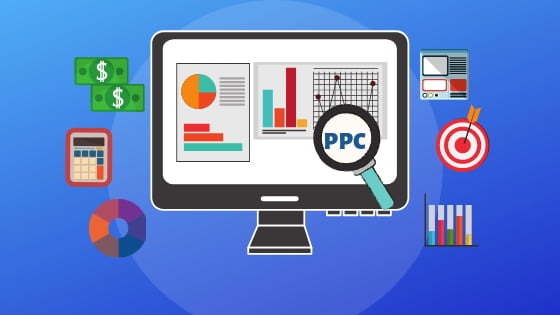Pay-per-click (PPC) advertising can be a powerful tool for driving traffic and generating leads. However, it’s also easy to make mistakes that can waste your budget and undermine your efforts. In this blog, we’ll explore some common PPC mistakes and provide tips on how to avoid them, ensuring your campaigns are as effective as possible.

Table of Contents
Toggle1. Not Setting Clear Goals
Mistake:
One of the most common mistakes is running a PPC campaign without clear, measurable goals. Without specific objectives, it’s challenging to gauge success or make informed decisions.
Solution:
Before launching your campaign, define clear goals such as increasing website traffic, generating leads, or boosting sales. Use the SMART criteria—specific, measurable, achievable, relevant, and time-bound—to set your goals. This clarity will guide your strategy and help you assess performance accurately.
2. Neglecting Keyword Research
Mistake:
Failing to conduct thorough keyword research can lead to targeting the wrong audience or missing out on valuable traffic. Using broad or irrelevant keywords can waste ad spend and result in low-quality leads.
Solution:
Invest time in keyword research using tools like Google Keyword Planner, SEMrush, or Ahrefs. Identify keywords relevant to your business, consider long-tail keywords for more specific targeting, and continuously refine your keyword list based on performance data.
3. Ignoring Negative Keywords
Mistake:
Many advertisers overlook the importance of negative keywords, which can lead to ads appearing for irrelevant searches. This can result in wasted clicks and increased costs.
Solution:
Regularly review your search term reports to identify irrelevant keywords triggering your ads. Add these terms as negative keywords to prevent your ads from showing up in unwanted searches, helping to improve targeting and reduce costs.
4. Poor Ad Copy and Design
Mistake:
Weak ad copy and uninspiring design can significantly impact your click-through rates (CTR). If your ads don’t grab attention or communicate value, potential customers are less likely to engage.
Solution:
Craft compelling ad copy that highlights the benefits of your products or services. Use strong calls to action (CTAs) and test different ad variations to see which resonates most with your audience. Ensure that your ad design is visually appealing and aligned with your brand.
5. Neglecting Mobile Optimization
Mistake:
With an increasing number of users browsing and shopping on mobile devices, neglecting mobile optimization can lead to a poor user experience and lost conversions.
Solution:
Ensure your landing pages are mobile-friendly and provide a seamless experience for mobile users. Test your ads on various devices and screen sizes to confirm that they display correctly and that the user journey is smooth.
6. Not Utilizing Ad Extensions
Mistake:
Failing to use ad extensions can limit your ads’ visibility and effectiveness. Extensions provide additional information and increase the likelihood of engagement but are often overlooked.
Solution:
Take advantage of ad extensions such as site link extensions, callouts, and structured snippets. These can provide valuable information and make your ads more appealing. Google Ads often rewards ads that use extensions with better ad positions and lower costs.
7. Lack of A/B Testing
Mistake:
Running PPC campaigns without A/B testing can lead to missed opportunities for optimization. Without testing, you may not know which elements are working or need improvement.
Solution:
Regularly conduct A/B tests on your ad copy, CTAs, landing pages, and targeting options. Test one variable at a time to isolate its impact, and use the insights gained to refine your campaigns continually.
8. Ignoring Analytics and Performance Metrics
Mistake:
Many advertisers launch campaigns and then fail to monitor their performance regularly. Ignoring analytics can prevent you from identifying issues and optimizing your campaigns effectively.
Solution:
Utilize tools like Google Analytics and Google Ads reporting to track key metrics such as CTR, conversion rates, and cost per acquisition (CPA). Regularly review this data to identify trends and make data-driven decisions for future campaigns.
9. Setting and Forgetting
Mistake:
Setting up a PPC campaign and then neglecting it can lead to underperformance. The digital advertising landscape is dynamic, and campaigns require ongoing attention and adjustments.
Solution:
Schedule regular check-ins to review campaign performance, adjust bids, refine keywords, and update ad copy. Staying proactive can help you capitalize on trends and improve results over time.
10. Not Budgeting Wisely
Mistake:
Overspending or mismanaging your PPC budget can quickly deplete resources without yielding results. Many businesses set a budget but fail to allocate it effectively.
Solution:
Create a detailed budget plan that considers your goals, expected ROI, and industry benchmarks. Monitor your spending regularly and adjust your budget based on performance and seasonality.
Conclusion
PPC advertising can be incredibly effective for driving traffic and generating leads, but common mistakes can hinder your success. By avoiding these pitfalls and implementing best practices, you can create more effective PPC campaigns that maximize your budget and deliver better results. Regularly assess your strategies and remain flexible, adapting to changes in your industry and audience preferences. With careful planning and execution, your PPC efforts can lead to significant business growth. Happy advertising!


No responses yet